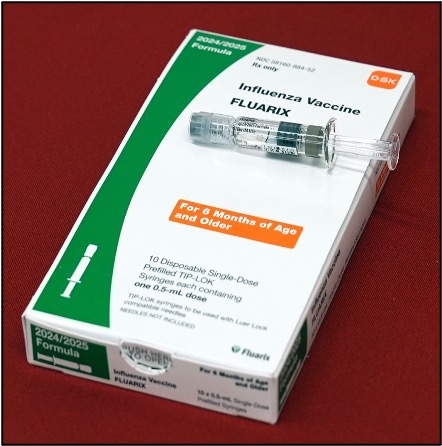Senior.com
January 9, 2025
By Christina Dailey
Cruising for Seniors: A Comprehensive Guide to Planning the Perfect Voyage
Cruises offer a unique and relaxing way for seniors to explore the world, combining luxurious accommodations with the convenience of all-inclusive travel. From cabin sizes and dining options to ports and excursions, this guide provides detailed insights into cruising for older adults. We’ll also cover costs, insurance, and boarding recommendations to ensure a smooth and enjoyable journey.

Cabin Sizes and Options
Cruise ships cater to various preferences and budgets, offering the following cabin types:
- Interior Cabins:
- No windows, compact space.
- Affordable option for budget-conscious travelers.
- Prices range from $75 to $150 per night, depending on the cruise line.
- Oceanview Cabins:
- Features a window or porthole with ocean views.
- Slightly larger than interior cabins.
- Prices range from $100 to $200 per night.
- Balcony Cabins:
- Private outdoor seating area with stunning views.
- Ideal for seniors seeking privacy and relaxation.
- Prices range from $150 to $300 per night.
- Suites:
- Spacious accommodations with luxury amenities.
- Includes perks like butler service and priority boarding.
- Prices start at $300 per night and can exceed $1,000 for premium suites.
Dining Options
Cruise lines offer a variety of dining experiences:
- Main Dining Rooms:
- Sit-down meals with set menus and service.
- Accommodates dietary restrictions and preferences.
- Buffets:
- Casual, self-serve meals with diverse options.
- Convenient for quick bites.
- Specialty Restaurants:
- Upscale venues offering gourmet cuisine.
- Additional fees typically range from $20 to $100 per person.
- Room Service:
- Available on most ships, often complimentary or with a small delivery fee.
Ports and Excursions
Cruise itineraries include various ports, each offering unique excursions. Popular destinations and activities include:
- Caribbean Cruises:
- Snorkeling, beach outings, and cultural tours.
- Excursion costs range from $50 to $150 per person.
- Alaskan Cruises:
- Glacier tours, wildlife spotting, and dog sledding.
- Excursion costs range from $75 to $300 per person.
- Mediterranean Cruises:
- Historical site visits, wine tasting, and local cuisine tours.
- Excursion costs range from $100 to $250 per person.
- River Cruises:
- Visits to small towns, castles, and scenic landscapes.
- Excursions are often included in the fare.
Costs and Budgeting
- Base Fare:
- Includes accommodation, meals, and onboard entertainment.
- Prices range from $500 to $5,000 per person for a 7-day cruise.
- Add-ons:
- Shore excursions, specialty dining, and spa treatments.
- Budget an additional $300 to $1,000 for extras.
- Gratuities:
- Typically, $15 to $20 per day per person.
- Prepaying gratuities simplifies budgeting.
- Travel Insurance:
- Costs range from 4% to 10% of the trip’s total cost.
- Covers trip cancellations, medical emergencies, and lost luggage.
Travel Insurance for Cruises
Travel insurance is essential for seniors, offering:
- Trip Cancellation Coverage:
- Reimbursement for cancellations due to illness or emergencies.
- Medical Coverage:
- Pays for onboard or portside medical treatments.
- Evacuation Coverage:
- Covers the emergency evacuation cost, often exceeding $50,000 without insurance.
Boarding and Departing Recommendations
- Boarding Tips:
- Arrive at the port early to avoid long lines.
- Use priority boarding options if available.
- Keep travel documents and medications in a carry-on bag.
- Departing Tips:
- Choose self-assist disembarkation for faster exit.
- Arrange transportation from the port in advance.
Tips for Seniors
- Accessibility:
- Ensure the ship offers wheelchair-friendly cabins and common areas.
- Request mobility aids like scooters or walkers if needed.
- Health Services:
- Most cruise ships have medical facilities with onboard doctors and nurses.
- Check for ships offering enhanced health protocols, especially post-COVID-19.
- Travel Companions:
- Traveling with family or groups reduces isolation.
- Solo seniors can join activities or meet others through onboard clubs.
Popular Cruise Lines for Seniors
- Holland America Line:
- Known for elegant dining and enrichment programs.
- Offers discounts for guests over 55.
- Viking River Cruises:
- Focuses on cultural experiences with all-inclusive pricing.
- Ideal for intimate, small-ship journeys.
- Celebrity Cruises:
- Offers luxurious accommodations and wellness programs.
- Features accessible staterooms and priority services.
- Royal Caribbean:
- Known for diverse activities and entertainment.
- Caters to multi-generational families.
Cruising is an excellent travel option for seniors, offering convenience, luxury, and adventure in one package. By carefully selecting the right cruise line, cabin, and itinerary, older adults can enjoy a stress-free vacation tailored to their preferences and needs. Cruising can be a safe and enriching experience for seniors worldwide with proper planning, travel insurance, and onboard support.







